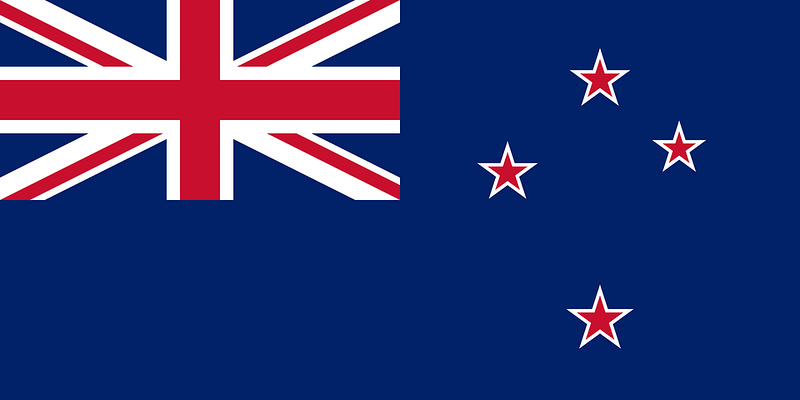This travel wiki page on New Zealand will help travelers with quick and relevant information to consider when planning and visiting the country. It is difficult to find all the pertinent information you need on culture, safety, travel restrictions, and things to do, so we summarize it all here. If anything is stale or outdated, please reach out and let us know! Let us dive in and explore more high-level information as a New Zealand trip planner.
Posted October 24, 2022 – Last Updated June 8, 2024
Table of contents
National Information & Culture
New Zealand is an island country on the southwest side of the Pacific Ocean. Its two mainlands are the North and South Islands, and over 700 smaller islands are also present. Wellington is the capital city, while Auckland is the most populous city. The official currency is the New Zealand Dollar (NZD).
The country is home to many active volcanoes, and the past volcanic eruptions and tectonic movements are the primary reasons for topography variation and sharp mountain peaks. Also, about thirty percent of the country’s total land area is a national reserve.
The first inhabitants of New Zealand between 1280 and 1350 were Polynesians, who later developed into the distinctive Maori culture. Today, most of New Zealand’s population is of European descent, followed by the indigenous Maori, Asians, and Pacific Islanders.
A young yet developed country, New Zealand pioneered the minimum wage in the workplace and was the first country to give women the right to vote. The country also ranks high in national performance, quality of life, public health services, education, government transparency, and economic freedom. New Zealand’s significant sources of revenue are the service and industrial sectors, agriculture, and international tourism.
Famous worldwide for its dairy products, the country’s sheep population is five times higher than the number of humans living in New Zealand. Aside from dairy, the kiwi, hobbit, and the country’s prominent rugby culture make New Zealand famous worldwide.
Maori Culture
Kia ora! It is the Maori language of greeting, an all-encompassing way to wish someone well. Distinctive to the Maori people is Hongi, a traditional greeting in which one presses one’s nose and forehead against someone else’s.
Haka, a Maori traditional war dance, became popular on the world stage because of the New Zealand All Blacks rugby team. The traditional dance displays strength and pride, including powerful stomps of the feet, wide eyes, and well-known tongue poking.
Ta Moko is a big part of the Maori culture. Traditionally, Ta Moko is an essential cultural representation of heritage, personal rank, and wisdom. For Maori, the sacred part of the body is the face and head. Hence, it is where they usually have their Ta Moko on.
Special Travel Considerations
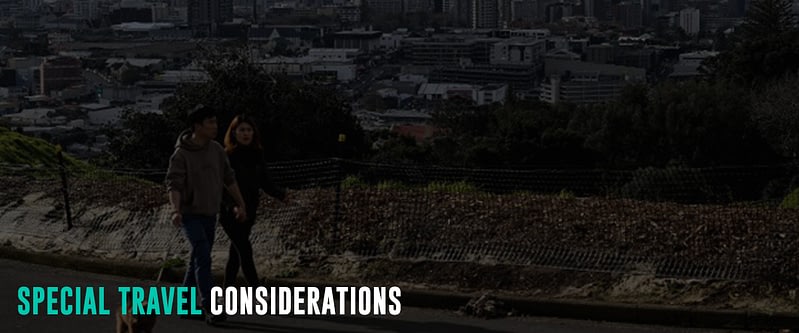
Each country and destination has rules and regulations that every traveler must consider. Hence, please consider the following factors for hassle-free travel to New Zealand.
Covid-19 Policy
All travelers, including aircrew, arriving in New Zealand do not need to present COVID-19 vaccination and testing requirements to enter the country. However, the government encourages everyone to remain updated with their vaccinations before traveling to New Zealand. So, make sure to check the latest Covid-19 policies of New Zealand when planning your trip.
Travel Insurance
Some visa categories may require mandatory travel insurance when traveling to the country. Hence, all visitors are highly encouraged to get travel insurance that covers emergency medical expenses, repatriation, and evacuation. Travel insurance can protect you against the inconvenience of injury, medical emergencies, theft, and flight cancellations. In addition, it provides comprehensive protection in case anything goes wrong with your trip.
New Zealand Traveler Declaration
The New Zealand Traveller Declaration (NZTD) collects travel, customs, immigration, and biosecurity information of every arriving passenger. Everyone traveling to New Zealand needs to complete a declaration within 24 hours before arrival when traveling by air. Meanwhile, visitors traveling by sea must complete the declaration within 24 hours before departing from the last foreign port before arriving in New Zealand. They can start the NZTD declaration online or by downloading the app.
Visa Information
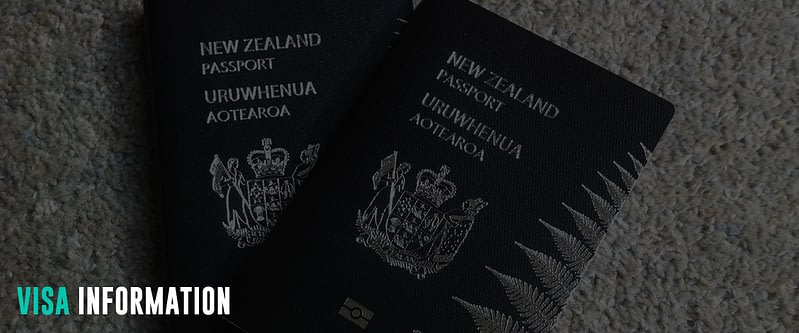
Australian citizens and permanent residents can enter and reside in New Zealand visa-free. Additionally, nationals from visa-waiver countries do not need to apply for a visa. However, they must secure the New Zealand Electronic Travel Authority (NZeTA) before they travel to the country. On the other hand, travelers from non-visa-exempt countries must apply for the necessary visa to enter New Zealand.
Aside from visa and NZeTA, visitors must have at least three months of valid passports beyond their departure date, proof of sufficient funds amounting to at least $570 (NZ1000) / month of stay, and an onward ticket. Generally, having at least six months of passport validity every time you travel worldwide is highly recommended.
NZeTA
Processing NZeTA can be done online, and it takes at least 10 minutes to 72 hours to secure approval. To process, visitors must pay $10 (NZD 17) if the application is made through the free app. If processed online, the NZeTA fee will be $14 (NZD 23). In addition, travelers must also pay an International Visitor Conservation and Tourism Levy (IVL) for NZD 35 at the same time as your NZeTA.
Australian passport holders and those with valid New Zealand visas must not apply and pay NZeTA.
Popular Attractions
A visit to New Zealand will always be full of adventure, with both the North and South Islands equally beautiful yet unique. Every trip is epic, from hiking on one of the ‘Great Walks’ routes to wandering the beaches, islands, geothermal, and national parks!
South Island
Fiordland National Park and Milford Sound
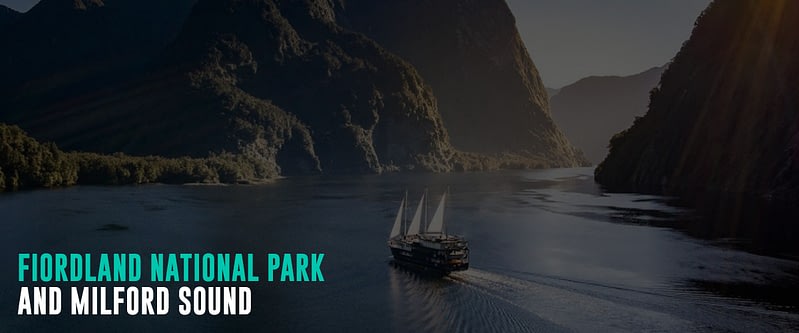
Fiordland National Park in the South Island of New Zealand is a World Heritage Site, protecting some of the country’s most spectacular scenery. It is home to the famous fjords of Milford, Dusky, and Doubtful Sounds. With its mountain peaks and dark blue coastal waters, visitors will enjoy exploring numerous waterfalls cascading down the cliffs, vast lakes, virgin rain forests, and offshore islands.
Unsurprisingly, Fiordland National Park is a haven for hikers with some of the country’s best hiking routes, including the famous Milford Track. In addition, visitors can also explore the fjords by sea kayaking or enjoy a scenic flight over the park for a bird’s-eye view of its staggering beauty.
Fox and Franz Josef Glaciers
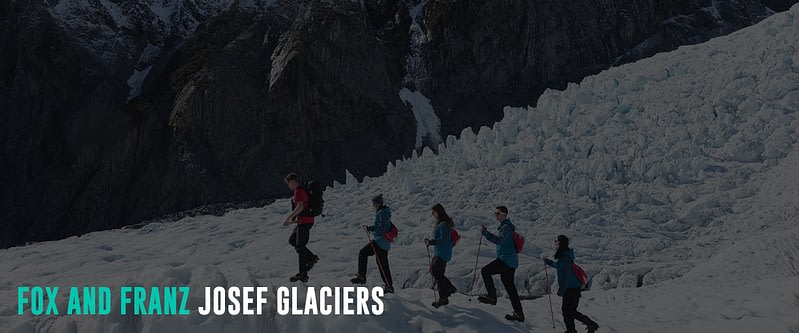
Franz Josef and Fox glaciers are among the most accessible glaciers in the world. They are the main tourist attractions in Westland Tai Poutini National Park on the South Island. These glaciers flow from some of the highest peaks in the Southern Alps to near sea level. Visitors can walk right up to the foot of the massive glacier through a guided hike, including some fascinating hot pools. They can also take a helicopter ride over the vast ice glaciers for an aerial view.
Abel Tasman National Park & the Abel Tasman Coast Track
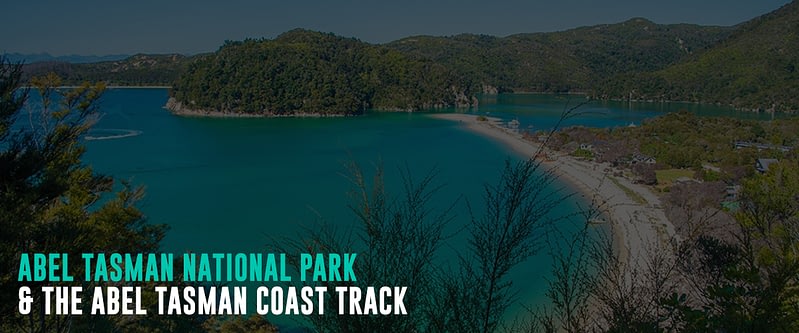
The Abel Tasman Coast Track in Abel Tasman National Park is one of New Zealand’s Great Walks in the South Island. This scenic 51-kilometer route is a hiker’s dream. Along the way, visitors can snorkel or kayak in the secluded coves; enjoy tours that offer the chance to spot fur seals, dolphins, penguins, and a diverse range of birds; hike through the rainforests, and enjoy panoramic views from the rugged coastal cliffs.
Photographers will also enjoy the various weathered rock formations, including the Split Apple Rock, a giant granite boulder sliced in two. The hike takes around three days, with accommodations ranging from campgrounds to rustic huts and plush private lodges.
Aoraki/Mount Cook National Park
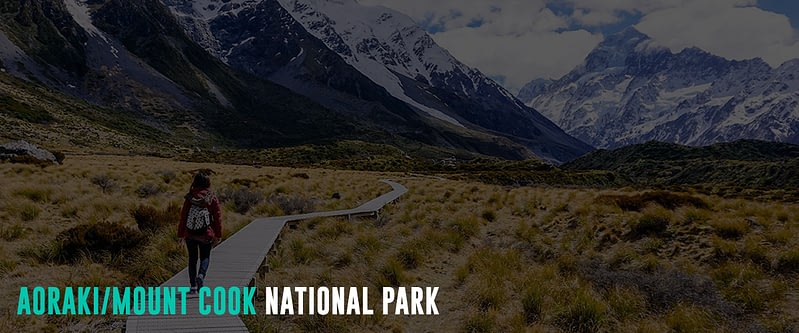
Aoraki, or Mount Cook, is New Zealand’s highest peak. It lies in the heart of the Southern Alps, rising above the alpine landscapes of Aoraki National Park, also called Mount Cook National Park. It is a top destination for mountaineering, with over 40 percent of the park covered in glaciers, and the longest glacier (Tasman Glacier) lies within its borders. The park has diverse flora and fauna and is home to more than 300 alpine plants and 40 species of birds, making it a haven for nature lovers. Activities include scenic flights, ski touring, heli-skiing, hunting, hiking, and stargazing trips. Mount Cook Village is an excellent base for exploring the park and organizing visitors’ activities.
Kaikoura
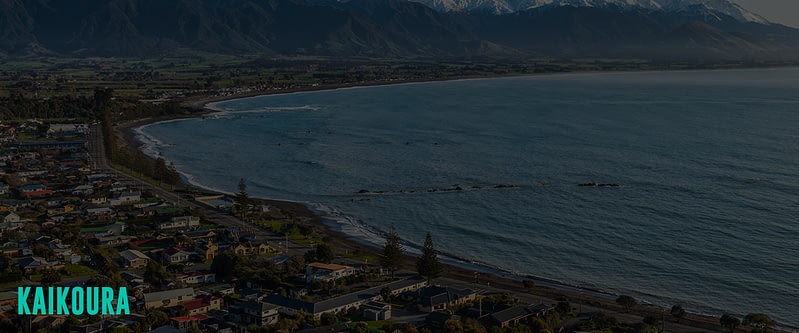
Kaikoura is a small South Island coastal town and a haven for seafood lovers, birders, and wildlife enthusiasts. It is an ideal place for visitors to spot fur seals, dolphins, sperm whales, humpback whales, and albatrosses off the shore. Visitors can also indulge in fresh crayfish, mussels, and blue cod. Land lovers can take a wilderness walk through the natural Kaikoura forest.
Queenstown
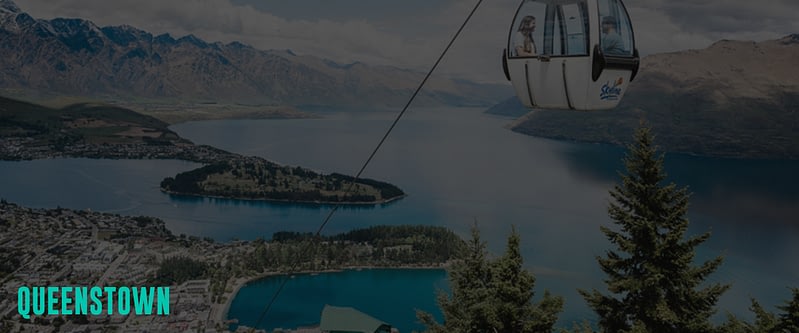
Queenstown is between the shores of shimmering Lake Wakatipu and the snowy peaks of the Remarkables in the South Island. It is the adventure capital of New Zealand and one of the country’s top destinations for international visitors. Bungee jumping, jet boating, white water rafting, paragliding, rock climbing, mountain biking, and downhill skiing are some adrenaline-fueled things in Queenstown. Visitors can also explore the stunning alpine scenery on the excellent network of hiking trails.
In addition to outdoor and adventure sports, Queenstown offers all the comforts, with first-class hotels, spas, restaurants, galleries, and shops. It is also an excellent base for sightseeing trips to the Central Otago region, where visitors can jump off to explore the gold-mining towns and the Middle Earth scenery from the famous Lord of the Rings movies.
North Island
Bay of Islands
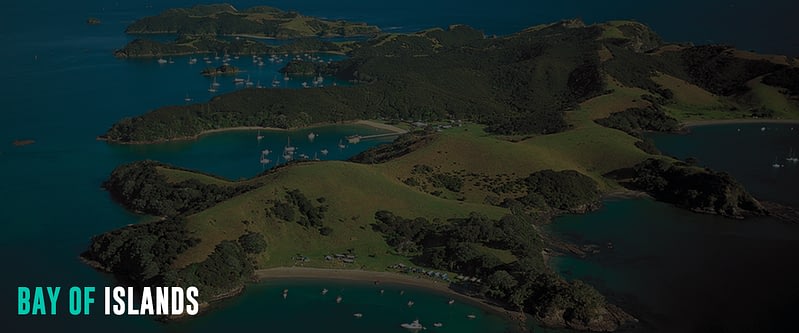
The beautiful Bay of Islands is only a three-hour drive north of Auckland and one of the most popular vacation destinations in the country. Over 144 islands line the glittering bay, making it a haven for sailing and yachting. The region is also a popular sport fishing spot, with penguins, dolphins, whales, and marlin living in its waters.
Activities here include sea kayaking along the coast, hiking in various island trails, enjoying the coves, touring Cape Brett and the famous Hole in the Rock rock formation, and exploring subtropical forests where Kauri trees grow. The quaint towns of Russell, Opua, Paihia, and Kerikeri are great places for visitors to explore this scenic bay.
Lake Taupo and Tongariro National Park
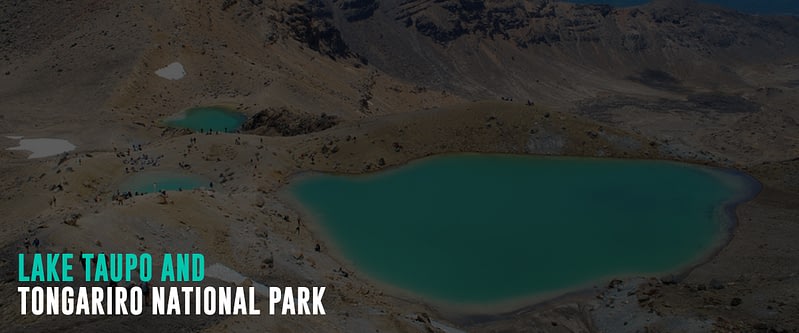
Tongariro National Park is in the center of the North Island and just a few kilometers away from Lake Taupo, New Zealand’s largest lake. The site is a dual World Heritage Site due to its spectacular volcanic features and importance to the Maori culture. In 1887, Maori chief Te Heuheu Tukino IV gifted the volcanic peaks of Tongariro, Ngauruhoe, and part of Ruapehu to the people of New Zealand to preserve this ‘sacred land.’
One of the oldest national parks in the world, Tongariro is unique in beauty, with towering volcanoes, turquoise lakes, arid plateaus, alpine meadows, and hot springs. One highlight of the park is the Tongariro Alpine Crossing, one of the most popular day walks in the country. This day-long hike covers Mount Tongariro and passes along the base of Mount Ngauruhoe, with blue and emerald lakes as significant scenic attractions.
Camping, enjoying the park’s many walks and hiking trails, and visiting its visitor center are fun things to do here.
Rotorua
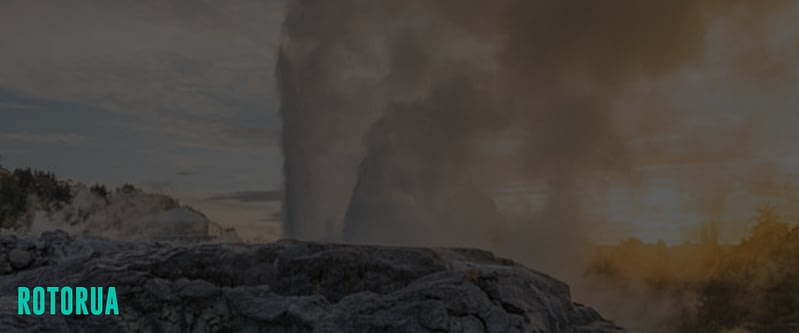
Rotorua is one of the most active geothermal regions in the world. Its topography includes boiling mud pools, erupting geysers, volcanic craters, and steaming thermal springs.
Visitors can take a walking tour of these geothermal wonders and soak in mineral hot springs while visiting and learning about various attractions of the region’s rich Maori history and culture. Skydiving, luging, mountain biking, and trout fishing are some of the activities in Rotorua.
Outside of Rotorua, on the North Island, is the beautiful destination of Wai-o-tapu. Here, visitors can hike through volcanic landscapes filled with geothermal activity. One of the highlights is the Lady Knox Geyser, which erupts daily with a show-stopping display straight into the air. Also, the nearby geothermal spas give travelers the perfect place to unwind after hiking along Wai-o-tapu’s volcanic trekking paths.
Napier Art Deco

Napier is a small city in Hawke’s Bay on the east coast of North Island, and it is famous for its eye-catching art and deco architecture. Unfortunately, a powerful earthquake in 1931 badly damaged most of Napier, and the rebuilding period coincided with the short-lived Art Deco era. As a result, Napier’s architecture is mainly of Art Deco design and is strikingly different from any other city in the world.
Thousands of tourists visit Napier during February for the Art Deco Weekend, an event dedicated to style, vintage cars, picnics, and the soapbox derby. Today, fun things and activities for visitors include taking a self-guided tour to view these buildings, some embellished with Maori motifs or spending time at Napier Beach. Nearby attractions include hiking trails and the gannet (seabird) colony at Cape Kidnappers.
Sky Tower in Auckland
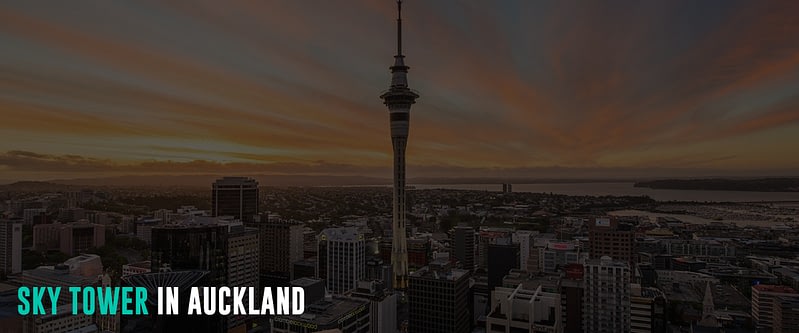
The Sky Tower is an observation and telecommunications tower in Auckland, the largest city in New Zealand. Standing at 328 meters (1,076 ft), it has become an iconic structure in Auckland’s skyline and the tallest in the Southern Hemisphere. The tower offers spectacular views across the city and hinterland up to 80 km away. Also, the top floor has fine dining in its Orbit revolving restaurant.
Blessed with two sparkling harbors, Auckland is famous as the “City of Sails.” Beaches, rainforest hiking trails, coves, islands, and volcanoes surround the city, making it a perfect base for day trips and wilderness adventures. Other fun activities in Auckland include top-notch dining, its vibrant arts scene, and exploring the revamped waterfront district packed with boutiques and restaurants.
Coromandel Peninsula
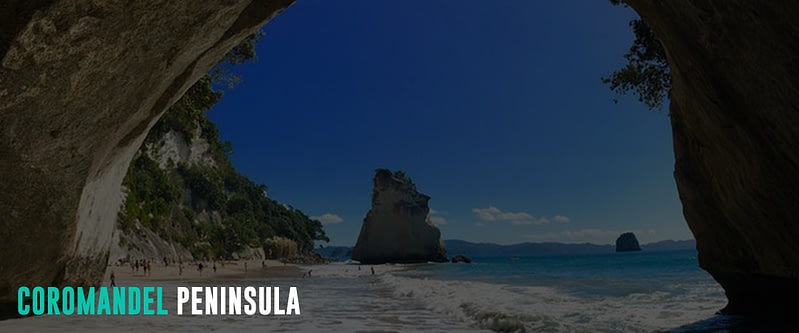
The Coromandel Peninsula is famous for its white and golden sand beaches, rainforests, and other natural wonders, ideal for hiking and birding. Tourists can also relax on the beaches, sea kayak around the islands, skydive, and visit the many galleries and art studios.
A great base to explore the peninsula is the Thames, a small but picturesque city with a rich history of gold mining. The best way to end the sightseeing day in Coromandel is to visit Hot Water Beach, where visitors can dig their hot pool from the springs under the sand.
Primary Spoken Language(s)

New Zealand has three official languages: English, Maori, and New Zealand Sign Language. English is the predominant and official language of New Zealand, wherein more than 95% of the population speaks. New Zealand English has similarities to Australian English in terms of accents. The Maori language of the indigenous Maori people follows. Lastly, New Zealand Sign Language is the official language of the deaf community in the country.
Safety Concerns

New Zealand ranks 4th as the safest country on the 2023 Global Peace Index. The country is generally safe, with a Level 1 travel advisory from the US State Department as of September 28, 2023.
Crime rates in New Zealand are low. But as always, it pays to prepare and take a few precautions to have a comfortable and trouble-free trip. Moreover, common sense and some outdoor safety awareness also help.
Do not bring much cash or expensive jewelry; look after your belongings, especially at airports, ferry terminals, or bus/railway stations. Stay in a well-lit place if you are out at night, and do not take shortcuts through parks or alleyways.
In emergencies, the national emergency hotline number for police, fire, and ambulance is 111. Calls are free, and anyone who feels unsafe is encouraged to call. Travelers can also utilize New Zealand’s Visitor Safety text messaging service to update their location and planned travel movements to 7233 [SAFE]. Messaging is accessible to mobile phones using Vodafone, Spark, or 2degrees network services.
Health and Environmental Hazard
The dangers in New Zealand lie in the environment, which may affect someone’s health and life. New Zealand has one of the world’s highest skin cancer rates after Australia. New Zealand has some of the strongest levels of ultraviolet (UV) radiation because the hole in the ozone layer is directly above Australasia. This means sunburn can happen within 15 minutes of sun exposure in New Zealand. Hence, regular use of high-SPF sunscreen is a must. Moreover, drink plenty of water to avoid dehydration and heat stroke.
When on the beach, never swim or surf alone, especially when cold or tired. Only swim between the flags and listen to advice from lifeguards. Look for signage warnings and learn to recognize ocean rip currents. Ask the local information centers for a safe swimming beach area.
When hiking or skiing, ensure you have appropriate gear for the activities. Wear sturdy footwear, especially when facing uneven terrain. Do not forget warm layers when traveling to alpine areas or skiing.
Natural Hazard
New Zealand’s location on the Pacific Ring of Fire makes it prone to earthquakes. The country is also home to several active and dormant volcanoes. Hence, keeping updated with the latest warnings is essential if travelers plan to visit a region with volcanic activity. Check out the GeoNet page for the latest Volcanic Alert Bulletins and the Department of Conservation site for updates on Volcanic Risk Information.
In addition to volcanoes, New Zealand has many popular geothermal destinations. However, thermal pools can boil (over 100⁰C or 210⁰F) and might have toxic gases or fumes at the surface. Also, thermal pools can be hidden under vegetation and form a thin crust on top that looks like a solid surface but will break if a person stands on it. Therefore, please stick to the walkways, stay behind the barriers, and obey the safety signs. In addition, hold the hands of young children when walking through the park.
Drone Regulations
New Zealand laws restrict drone flying in the country. All drone operators must follow the Civil Aviation Authority (CAA) rules and the local government authority they wish to fly. For example, if visitors want to fly a drone in Auckland, they need to follow the policy of the Auckland District Council. Visit the Civil Aviation Authority (CAA) website for the complete guidelines for flying drones,
Budget Considerations
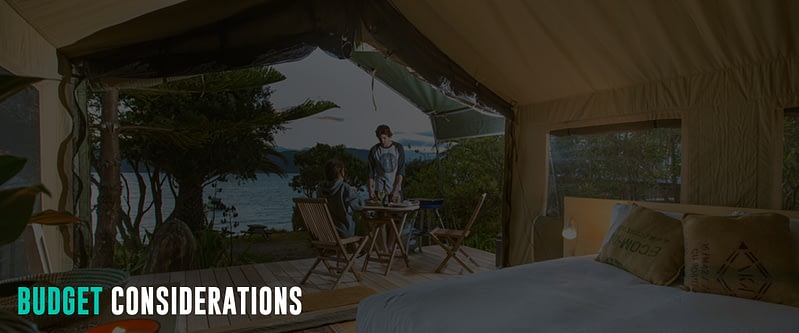
The cost of traveling to New Zealand mainly depends on the season when you travel, accommodation type, mode of transport, number of people traveling together, meals you eat, and the type of activities and destinations chosen. However, with a thorough plan of your itinerary, it is possible to explore the top attractions in New Zealand on a budget.
Accommodation
A hostel dorm bed averages $20, while a private room is around $30. Depending on the location, visitors can stay in a bed and breakfast room for $50 and an apartment or holiday home for $60. Similarly, a three-star hotel room starts at $70 per night. Travelers looking for comfort and luxury can stay in a five-star hotel for $150. However, the options do not stop there. New Zealand also offers other luxury accommodations in resorts or private villas.
Food
New Zealand has abundant seafood. Its cuisine consists mainly of fish and chips, meat pies, and specialties like Maori hangi. Other popular dishes are roast lamb, muscles, scallops, oysters, and snapper. However, the country is overall very vegetable-friendly. Vegans and vegetarians will find plant-based dishes on restaurant menus throughout the country.
Fast food meals in New Zealand start at $10, while Asian foods are around $15. Travelers can also find authentic New Zealand cuisines in cheap restaurants for $15 and seafood meals for $20. Similarly, travelers can have a three-course dinner for $30.
To save on meals, travelers can go grocery shopping and cook meals at a weekly budget of between $60 and $70. The budget can include rice, pasta, fresh farm produce, and some seafood.
Attractions and Transportation
Being a country famous for outdoor adventure, your visit to New Zealand is not complete without trying out these activities. A visit to a geothermal park starts at $15, horse trekking at $25, whale watching or swimming with the dolphins at $60, white water rafting at $50, Glowworm Cave entrance at $29, and skydiving at $160. Of course, visitors should not miss a visit to the famous Hobbiton Village at $45 and a cruise to the Milford Sound at $37.
On the other hand, city bus fare in New Zealand starts at $2 per zone using a prepaid card. The fare to the next city begins at $5. Another option is to hire an e-scooter, bike, or car, especially if you are traveling in a group. A camper van or motor home rental starts at around $30 daily. Although renters must buy fuel, they can save a lot by not paying for accommodation.
Average Two-Week Cost
A budget traveler’s trip to New Zealand will cost around $60 daily. Hence, at least $840 is necessary for two weeks of travel. This budget covers the costs of staying in hostels, taking public transportation, cooking their meals, and occasionally dining in cheap diners. On this budget, travelers mainly do free activities on the beach or hiking.
Meanwhile, travelers can comfortably stay in a 3-star hotel on a mid-range budget of $120 daily or $1680 in two weeks. The budget also includes dining out at local and mid-range restaurants, taking occasional taxis, and doing a few paid tours and activities.
Lastly, travelers can enjoy luxury in New Zealand for $300 daily to $2100 for two weeks. It includes staying in five-star hotels and resorts, dining anywhere, vehicle rental, and all the paid tours and activities they want. For them, the sky is the limit for travel.
Customs And Import Restrictions

New Zealand Customs Service is very strict with biosecurity. They prohibit the entry of certain items such as weapons and firearms, drugs and drug paraphernalia, and objectionable/indecent materials in print, film, and records. Passengers cannot bring medicines containing pseudoephedrine. However, prescription medicines are allowed with a valid doctor’s prescription. Permits are necessary to bring ivory, turtle products, meats and goods from marine mammals, and live plants and animals. Passengers must dispose of or declare fresh, preserved, or dried food to avoid inconvenience. Also, sporting and recreational equipment must be recorded upon arrival.
Visit the New Zealand Customs Service web page for the complete list of import restrictions and prohibitions. Visitors may also check the Ministry for Primary Industries to see how to declare items upon arrival.
Climate Considerations
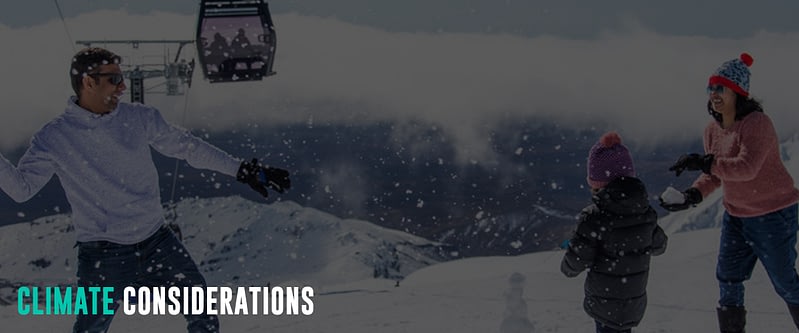
New Zealand has a temperate and maritime climate with high sunshine hours and moderate rainfall. Most of the country lies near the coast, bringing mild temperatures. The average temperature decreases as you travel south. January and February are the warmest months, with July being the year’s coldest.
The country has four seasons, each with a unique charm that entices every traveler. Summer, from December to February, brings an average daytime temperature of 21 – 32˚C (70 – 90˚F). Fall is from March to May, with an average daytime temperature of 7 – 21˚C (45 – 70˚F). June to August are the winter months, ranging from 1.5 – 15.5˚C (35 – 60˚F). Finally, spring brings an average daytime temperature of 4.5- 18˚C (40 – 65˚F) from September to November.
Primary Transportation Options
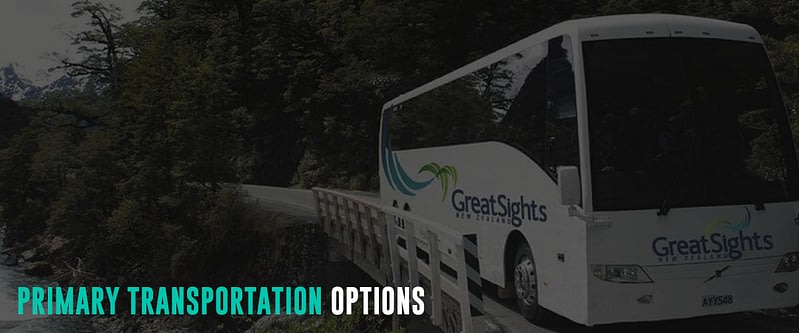
There are many choices when it comes to getting around New Zealand. The country has an efficient public transportation system by air, land, and water.
Air
The main entry points for foreign visitors to the country are Auckland International Airport, Christchurch International Airport, and Wellington International Airport. However, New Zealand has many other domestic airports, from the far north of Kaitaia down to the south of Stewart Island. Hence, traveling by air is the most convenient way to explore the country in a limited time. Air New Zealand, the country’s flag carrier, connects the country domestically and internationally. And with competition among various significant and regional airline companies like Jetstar and Air Chatham, flight tickets have become affordable to the public.
Vehicle Rental
Visitors who want more flexibility during the trip can hire a car or a motorhome in New Zealand. Several major international rental companies have shops at the main airports and cities. Many local rental options exist, including e-scooters and bikes for hire accessible through a smartphone app. A camper van or motor home rental starts at around $30 daily.
When driving in New Zealand, note that they drive on the left-hand side of the road. Also, their streets are narrower and primarily two-way, with one lane in each direction.
Taxis
Hiring a taxi in New Zealand is another convenient and flexible trip option. Taxis are well-regulated and safe to hail, call via mobile, or book through an app. Most taxis have various payment options, such as cash, credit, or in-app.
Coach or Bus
Local buses are the primary option for traveling in major cities and towns in New Zealand. It is a cost-effective alternative to air travel, with many companies operating daily scheduled services nationwide. There are also bus and coach companies serving the main tourist routes. In addition, hop-on-hop-off buses that offer an unlimited pass for a fixed amount are running in Auckland. With this pass, visitors can explore various attractions on a budget. Aside from the public bus, travelers can join coach tours (either backpacker style or luxury) or day trips offered by several companies.
Rails
Overland rail travel in New Zealand is slow and ideal for enjoying spectacular scenery not viewable from the main roads. Scenic rail journeys also provide a seamless connection between the North and South islands.
The Northern Explorer provides a 12-hour train trip between Wellington and Auckland on the North Island. The journey takes passengers through the volcanic heart of the North Island, passing through the landscapes of Tongariro National Park and the famous Raurimu Spiral.
The Coastal Pacific offers scenic train trips between Picton and Christchurch in the South Island. Along the way, watch out for seals and penguins on the coastal rocks of the Pacific Ocean. The route is also ideal for stopovers in Kaikōura, which is famous for whale-watching safaris. The journey also carries travelers through 22 tunnels and across 175 bridges.
Another scenic South Island train route is aboard the Tranz Alpine. It crosses the Southern Alps, linking the city of Christchurch to historic Greymouth. Highlights of the TranzAlpine journey include the 73-meter-high staircase viaduct, Arthur’s Pass National Park, and the Otira tunnel. The route covers 223.8 kilometers in four and a half hours, passing through 19 tunnels and four viaducts.
Ferries
Visitors can travel between the North and South Islands on a ferry that can take passengers and vehicles. Interislander and Bluebridge ferries run several daily schedules across the Cook Strait between Wellington and Picton. A daily passenger ferry also serves the bottom of the South Islands between Bluff and Stewart Island, passing across Foveaux Strait.
Start Trip Planning
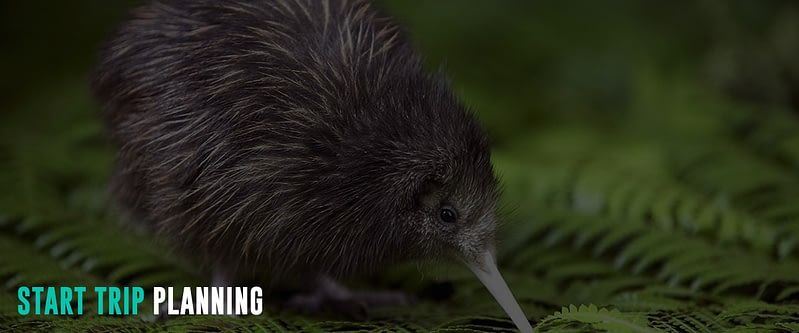
Travel-Wise is made from the ground up to help people travel more, break down the barriers that make it challenging to get going, and start your journey as painlessly as possible. Bookmark our other Country Guides to help kick-start your research for future travels. We also offer templated itineraries from our staff and community that help serve as a building block for your trip plans. Alternatively, we also utilize AI to offer a way to generate itinerary ideas. It saves much time just getting you up and running with a template. From there, you can use the trip planner to create your customized itinerary, invite friends and family for collaboration, find others from Travel-Wise to join the trip, book and track important information, journal, and share your experiences at the end or along the way!

